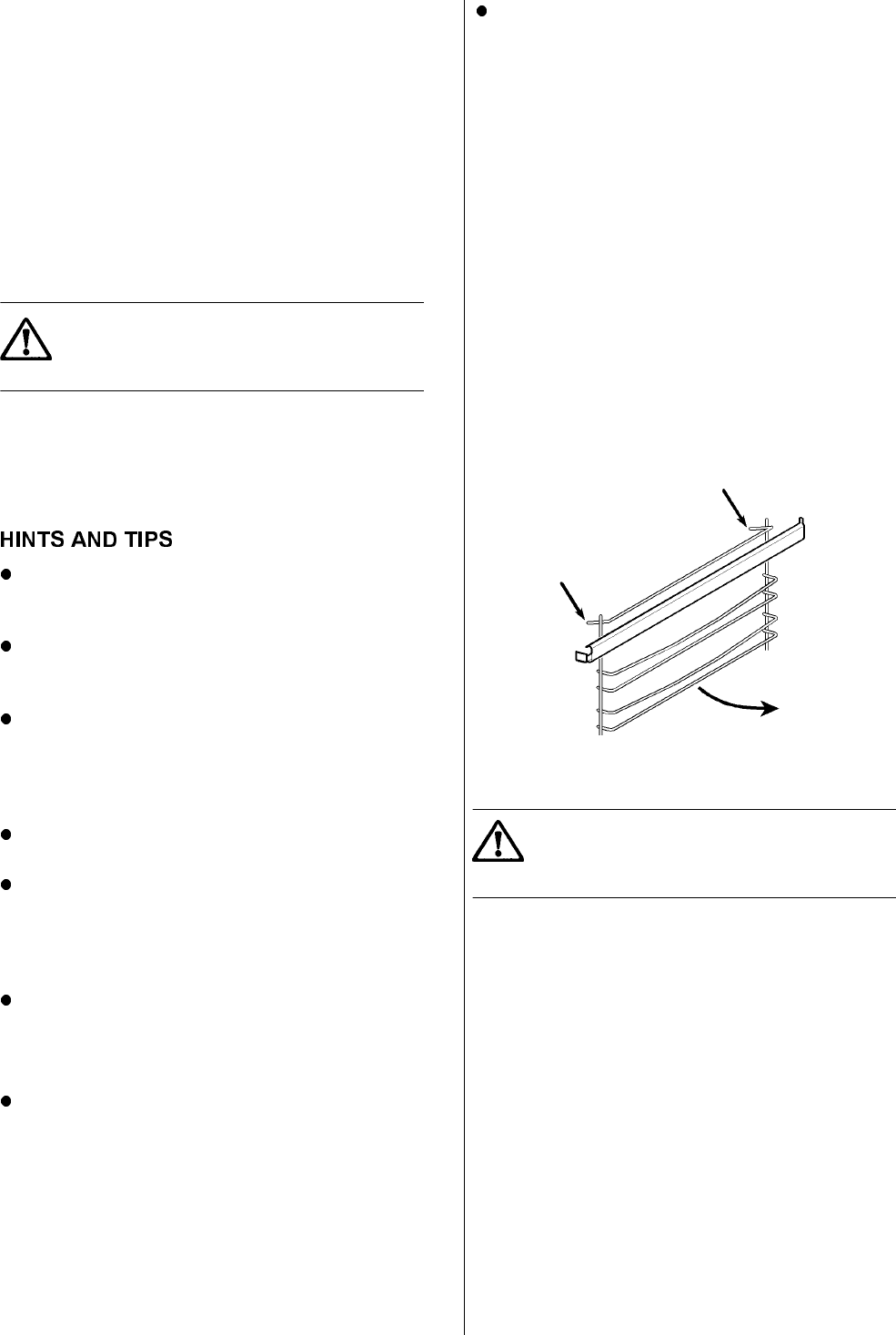
CLEANING INSIDE THE OVENS
The vitreous enamel base in the ovens can be cleaned
using normal oven cleaners or aerosol oven cleaners
with care. Ensure that the manufacturers instructions
are followed and that all parts are well rinsed
afterwards.
The sides and back of the main oven and top oven
compartment are coated with Stayclean enamel
surfaces.
The Stayclean surfaces inside the ovens should not be
cleaned manually. See 'Care of Stayclean Surfaces'.
CARE OF STAYCLEAN SURFACES
Stayclean surfaces destroy splashes of food and fats
when the oven temperature is raised to around 220°C.
It is a good idea to run the oven for an hour or two per
week to ensure continued good performance from the
Stayclean finish.
Manual cleaning of Stayclean is not recommended.
Damage will occur if oven sprays or abrasives of any
kind are used.
Slight discolouration and polishing of the Stayclean
surface may occur in time. This DOES NOT affect
the Stayclean properties in any way.
A good time to allow the oven to run on is after the
weekly roast. After removing the roast, turn the oven
up to 220°C and allow to run for an hour or so. It is
important NOT to allow a build-up of soilage as this
can prevent the Stayclean from working.
Follow the recommendations below to keep oven
soilage to a minimum.
Cook at the recommended temperatures. Higher
temperatures during roasting will increase soilage.
Try cooking at lower temperatures for an increased
length of time, you will save energy and often the
joint is more tender.
Use minimal, if any, extra oil or fat when roasting
meat, potatoes only require brushing with fat before
cooking. Extra fat in the oven during roasting will
increase splashing and soilage.
It is NOT necessary to add water to a meat tin when
roasting. The water and the fat juices from the joint
create excessive splattering during cooking - even at
normal temperatures, as well as causing
condensation.
Covering joints during cooking will also prevent
splashing onto the interior surfaces. Removing the
covering for the last 20-30 minutes will allow extra
browning if required. Some large joints and turkeys
especially benefit by this method of cooking, allowing
the joint to cook through before the outside is
overbrowned.
REMOVING AND REPLACING WIREWORK
SIDE RUNNERS
Remove all shelves and furniture from the oven. If fitted
ensure the telescopic runners are pushed back into
place in the oven cavity. Hold the bottom of the
wirework runners and draw the runners towards the
centre of the oven. Unhook from the top and remove.
The telescopic runners should be dried carefully after
washing in hot water to which washing up liquid has
been added. If heavily soiled mild abrasives may be
used.
To replace the runners, hook the wirework side runner
into the cavity, slide back and press into place.
CLEANING THE GRILL AND OVEN
FURNITURE
All removable parts, except the grill pan handle and
telescopic runners can be washed in the dishwasher.
Alternatively soak them in hot soapy water if heavily
soiled. They will then clean more easily.
The grill pan and meat tin may be cleaned using a soap
impregnated steel wool pad. The grill pan grid, wirework
runners and oven shelves should be cleaned using hot
soapy water. Soaking first will make cleaning easier.
37
CAVITY CENTRE
BRACKET
Ensure the wirework runners are firmly
in position before replacing the oven
shelves.
Aerosol cleaners must not come into
contact with elements or the door seal
as this may cause damage.


















